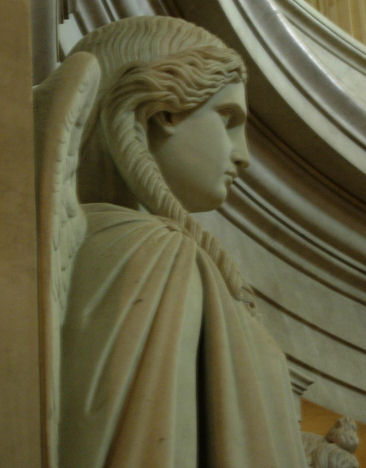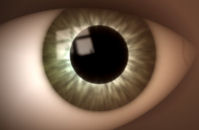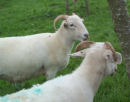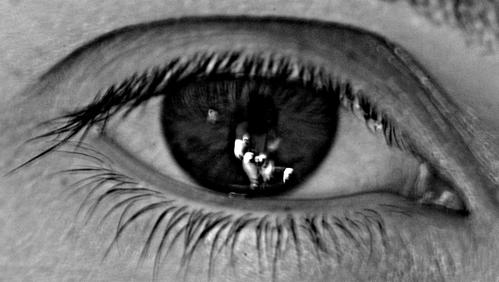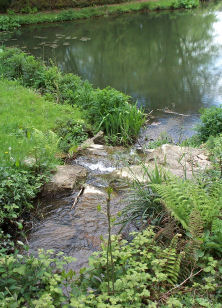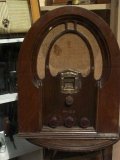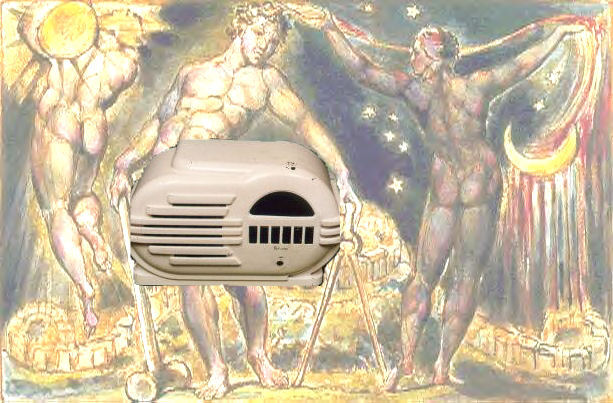Oculocentrism or ocularocentrism - dominance of seeing in our senses
The eyes have it.
| A visually-based paradigm used to explain the nature of all experience, privileging the eye over the other senses. A worldview centered on the 'view'. |
| Vision has been privileged in Western culture. (below) |
| Opposing this is logocentrism or the verbocentric- privileging language in the production of meanings. How valid is vision as a paradigm of consciousness - as an image, that is, of knowledge itself, and of power? |
 Other theoretical
models or paradigms involved: epistemology
- audiences (reception theory) Other theoretical
models or paradigms involved: epistemology
- audiences (reception theory) |
| HOW THIS IS LINKED TO THE MEDIA AUDIENCE (film, TV, radio): the perceiver's 'competence' - see RECEPTION THEORY (on another page) |
| References - Merleau Ponty on perception, Foucault on surveillance, Debord on the spectacle, Panopticon (see below for SOME REFERENCES) |
 HOW THIS
IS LINKED TO FILM THEORY: the apparatus of the camera, the eye/'I'
of the camera, focus (Rothman, Herwitz - see below for SOME
REFERENCES) HOW THIS
IS LINKED TO FILM THEORY: the apparatus of the camera, the eye/'I'
of the camera, focus (Rothman, Herwitz - see below for SOME
REFERENCES) |
| HOW THIS IS LINKED TO RADIO THEORY: see Radio apparatus theory (on another page) |
 HOW THIS IS LINKED TO PHILOSOPHY: See Phenomenology
(on another page)
HOW THIS IS LINKED TO PHILOSOPHY: See Phenomenology
(on another page) |
| Randy Thom - below on this page |
| Models of the mind - below on this page |
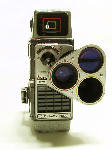 To
take this further as academic debate - see Internalist
Model of the senses To
take this further as academic debate - see Internalist
Model of the senses |
| See - Aurality as central to radio theory - for the study of hearing as central and in relation to consciousness studies. |
| Point-of-listening in radio plays - Beck, Alan, 1998, Sound Journal Section 4 |
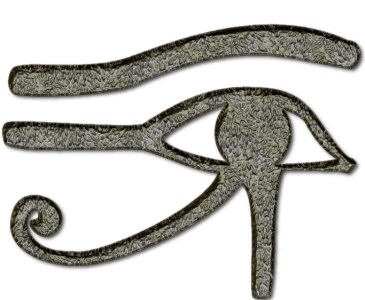
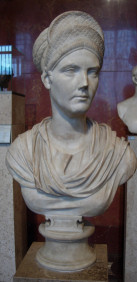
|
Julian Sterne - masterly study of the history of sound Sterne, Julian, The
Audible Past. Cultural Origins of Sound Reproduction, 2003,
London: Duke University Press pp 2-3 The Audible Past tells a story where sound, hearing, and listening are central to the cultural life of modernity, where sound, hearing, and listening are foundational to modern modes of knowledge, culture, and social organization. It provides an alternative to the basic narrative that says that, in becoming modern, Western culture moved away from a culture of hearing to a culture of seeing. There is no doubt that the philosophical literature of the Enlightenment- as well as many peoples everyday language-is littered with light and sight metaphors for truth and understanding. But, even if sight is in some ways the privileged sense in European philosophical discourse since the Enlightenment, it is fallacious to think that sight alone or in its supposed difference from hearing explains modernity. NOTE: Sterne outlines how the sense of hearing became separated from the other senses, primarily sight, to become an object of medical, physiological, and anatomical study in the late 19th century. |
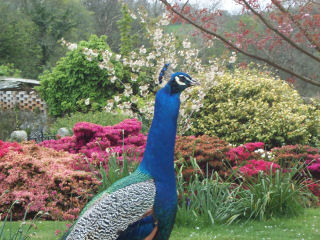
Dangers of visually-based theoretical terms (as 'image') - warning by Alan Beck:
| I have repeatedly warned about the intrusion of visually-based terms in core radio theory. |
| Of course, I am not the first to do so, and some such cross-over is unavoidable. But I object to the use of 'image' in core radio theory. |
| 'Image' has its place in reception theory for radio, especially if the internalist model (across all the sensory array) is followed. |
| Mostly do NOT use 'image' in core radio theory, and intead use 'representation' and 'simulacrum'. ('Simulacrum' in the sense of copy - but see Simulacrum - particular definition) |
| 'Image' can be used in radio reception theory. |
| This avoids the danger of 'equivocal use' of a key term. We have to use main terms to denote processes or suchlike which belong to the subject area - radio - and help us understand it. |
| We should keep to particular ways of thinking and knowing that are to do with radio and sound perception. |
| Linguistic philosophers have argued that images cannot be considered a language: images have no common elements similar to a written language's alphabet & images have no recognized syntax. (See Lester - below) |
IMAGE
| IMAGE AND THE VISUAL: 'Image' is connected with the 'visual' both in its root and its applications. |
| DEFINITION OF IMAGE CONNECTED TO THE VISUAL: "its visual quality comes closest to its character and, though far from given once the discussion turns to literary concerns, 'seeing' remains a constituent and source for almost all discourse on the nature of images. The affinity is suggested etymologically as well since 'image' means, among other things, 'idea' which stems from the Greek 'to see'" (The University of Chicago, Theories of Media, Keywords Glossary at http://csmt.uchicago.edu/glossary2004/image.htm) |

FILM THEORY AND IMAGE
| Film theory has based so much on the spatial relationship between the spectator and the screen, echoing Plato's cave and Lacan's mirror (Baudry 1970, p 294; Baudry 1975 pp. 302-306). |
| The narrative of consciousness in film becomes often 'the story of the eye', an organ which is not so much as part of the body, but 'a part of the mind' (Leo Steinberg). |
| References |
| Baudry, Jean-Louis, 1970, "Ideological Effects of the Basic Cinematographic Apparatus", Bill Nichols, ed. Movies and Methods Volume II. Berkeley: University of California Press, 1986 [essay written 1970]. |
| Lester, Paul, 'Syntactic Theory of Visual Communication' published in Visual Communication Images with Messages, (1995) Belmont, CA: Wadsworth Publishing Company, Chapter 17 also online at http://commfaculty.fullerton.edu/lester/writings/viscomtheory.html |
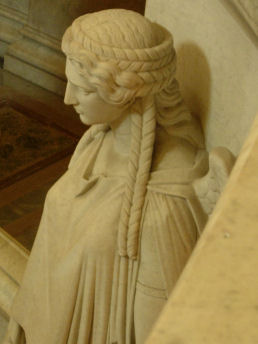
|
Beck 1 Beck, Alan, 2000, 'Cognitive
mapping and radio drama', Consciousness and the Arts and Literature,
Volume 1 Number 2, July 2000 'Image', for me, is too greatly linked to artwriting (Carrier's term) issues of ocular perceptualism, visual representation or reflection, aesthetics, iconography, gaze, image-making and the dichotomy of text/image. There is the deeper, and for some, semiotic question of the domain of visual image versus that of words. Image's link to its referents is on a spectrum from lifelikeness ('vraisemblance' and natural resemblance) to the arbitrary (abstraction). Image involves a registration of the world through visually material signs and so I have excluded the term on the grounds of coherence in my own argument; though I also acknowledge that others use 'image' inclusively and do so cogently. Robert Belton quotes John Berger in Ways of Seeing, defining image as a 'sight which has been created or reproduced ... detached from the place and time in which it first made its appearance and preserved' (in Words of Art, electronic publication). Watson and Hill, 1997, 108 define image as 'a likeness: a representation: a visualization', noting it interprets and has meaning. Abandoning 'image', I have resorted otherwise to 'simulacrum', 'representation', etc. For a definition of text as a term, see Watson and Hill, 1997, 233, quoting Saunders, Danny and Fiske, John, 1983, Key Concepts in Communication, London: Methuen, 'a signifying structure composed of signs and codes which is essential to communication', and in a variety of forms: film, speech, writing, painting. (For discussion of the term 'text' in relation to radio, see 2.9.10.) References here Belton, R., 1999, Words of Art. Department of Fine Arts, Okanagan
University College. electronic publication. http://www.arts.ouc.bc.ca/fiar/glossary/gloshome.html
Beck 2 Beck, Alan, 1999c, 'Is
radio blind or invisible? A call for a wider debate on listening-in',
World Forum for Acoustic Ecology (WFAE) also at http://interact.uoregon.edu/MediaLit/WFAE/library/articles/beck_blindness.pdf References here: Napier, A.D., 1992, Foreign Bodies: Performance, Art and Symbolic Anthropology, California: University of California Press.
Beck 3 Beck, Alan, 2000a, 'Cognitive
mapping and radio drama', Consciousness and the Arts and Literature,
Volume 1 Number 2, July 2000 also at - Of course, the film spectator navigates the visual track via the camera and the director's editing. Rothman comments: 'The camera also represents the viewer. Does it, then, always serve two masters?' (Rothman, 1988, ix). But camera or microphone - both restrict the epistemic situation of the viewer/listener. References here: Rothman, William, 1988, The "I" of the Camera, Cambridge: Cambridge University Press.
Thom, Randy, 'More Confessions Of A Sound Designer', electronic
publication
The hegemony of vision improperly subordinates the other senses, it is claimed. And especially the time-based and language-based sense of hearing. Epistemology is involved, as soon as the truth of the visual is challenged and so illusions of vision ('ghost' images, anamorphosis) enter the discussion. Vision requires no physical contact with its object. Seing, hearing, and the other senses are usefully separated for the purposes of individual analysis, but we must seek to understand the integrity of consciousness. Varela Varela, Francisco, Thompson, Evan, and Rosch, Eleanor, The Embodied Mind. Cognitive Science and Human Experience, 1991, Cambridge, Mass: The MIT Press. ... the basic idea that the brain is an information - processing device that responds selectively to features of the environment remains as the dominant core of modern neuroscience and in the public's understanding. Jay Jay, M. 1993. Downcast Eyes: The Denigration of Vision in Twentieth-Century French Thought. Berkeley, CA.: University of California Press. Still obsessed with visual questions to our day, most French thinkers have nonetheless decisively jettisoned the ocularcentric assumptions of the Western tradition'. (p. 187).
Crary, Jonathan, 1992, Techniques of the Observer. On Vision and Modernity in the Nineteenth Century, Cambridge, Mass.: MIT Press Debord, Guy-Ernest, 1988, The Society of the Spectacle, Paris: Editions Gerard Lebovici, Chapter 6, 'Spectacular Time', at http://library.nothingness.org/articles/SI/en/display/23 and http://www.bopsecrets.org/SI/debord/6.htm Fitch, Brian T., 1991, Reflections in the Mind's Eye. Reference and Its Problematization in Twentieth-Century French Fiction, University of Toronto Press: Toronto and London. Foucault, Michel, 1975, Surveiller et punir, translated by Alan Sheridan, 1977, Discipline and Punish: The birth of the Prison, New York: Pantheon Books (see http://www.criminology.fsu.edu/crimtheory/foucault.htm with photo of Panopticon) Herwitz, David, 'Screening The I' of the Camera', Film and Philosophy. This article has disappeared from the internet, which is unfortunate. I have found it valuable. See here for short excerpt. Hide, D. 1976. Listening and Voice: A phenomenology of Sound. Athens, OH.: Ohio University Press. Howes, D., ed. 1991, The Varieties of Sensory Experience: A Source Book in the Anthropology of the Senses. Toronto: University of Toronto Press. Jay, M. 1993. Downcast Eyes: The Denigration of Vision in Twentieth-Century French Thought. Berkeley, CA.: University of California Press. Jencks, C, ed. 1995. Visual Culture. London: Routledge. McPhee, Scott, 1996, 'Audio visual poetics in interactive multimedia'. This article has disappeared from the internet, which is unfortunate. I have found it valuable. See here for short excerpt. Merleau-Ponty, M., 1945, Phenomenologie de la Perception, translated 1962 by Smith, Colin. Phenomenology of perception. London: Routledge and Kegan Paul. Rabinow, Paul, ed., 1986, The Foucault Reader, Harmondsworth: Penguin, pp 206 ss. Rothman, William, 1988, The "I" of the Camera, Cambridge: Cambridge University Press. Rothman, William and Keane, Marian, 2000, Reading Cavell's The World Viewed. A Philosophical Perspective on Film, Detroit: Wayne State University Press. Sweeney, Kevin W., 1994, 'The Persistence of Vision: The Re-Emergence of Phenomenological Theories of Film', Film and Philosophy, 1 (1), 29-38. This article has disappeared from the internet, which is unfortunate. I have found it valuable. See here for short excerpt.
'The eye is superficial, the ear is profound and inventive.' Bresson, Robert, Notes on Cinematography, trans. Griffin, Jonathan, 1977, New York: Urizen Books, p.39.
|
OTHER LINKS
| Listening - how people listen |
This site is 'Radio Drama - directing, acting, technical, learning & teaching, researching, styles, genres'. See INDEX to navigate also. Complete curriculum of scripts, techniques (acting & directing & post-production & genre styles), advice, sound files - effects and atmoses (with no copyright and so free to use), detailed script commentaries, etc.
TECHNIQUES - FULL RANGE OF RADIO DRAMA TECHNIQUES ON THESE SITES
Academic material on this site is
Alan Beck is licensed under a Creative Commons Attribution-Non-Commercial-Share Alike 2.0 UK: England & Wales License.
Learn about radio drama on this site along with my book - Beck, Alan, Radio Acting, London: A & C Black ISBN 0-7136-4631-4 Available on Amazon. CLICK HERE.
To the WELCOME PAGE for Alan Beck's sites. See more of Alan Beck's work.
Any opinions expressed in this site are the personal opinions of the owner of the site. IF YOU HAVE COMMENTS, PLEASE EMAIL TO : [email protected]
